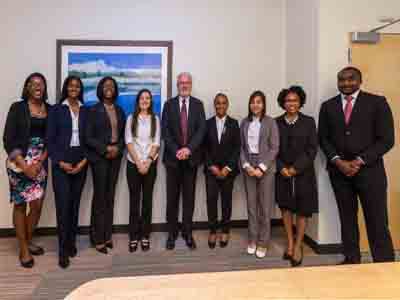When she was looking at colleges as a high school senior, Nieja Devaughn knew she wanted to move beyond the borders of the life she had known growing up in Capitol Heights, Maryland. So when recruiters at a college fair told her to look into South Carolina State University (SCSU), she was receptive to their pitch.
She applied, was accepted, and was soon on her way to the historically Black university in Orangeburg, South Carolina, where she is currently finishing her junior year and majoring in criminal justice. SCSU and South Carolina’s friendly, hospitable atmosphere helped make the transition easier, she said.

Devaughn said she is fortunate so far to have made it through her first three years of college without having to take on outside loans, even though SCSU’s tuition keeps going up. Financing her education became much easier this year when she was awarded the ETS Presidential Scholarship for HBCU Students.
While ETS is more widely known for providing exams like the GRE, TOEFL, and others, its philanthropic arm, guided by the ETS Center for Advocacy and Philanthropy (CAAP), is working quietly to advance the academic careers of standout students. The Presidential Scholarship provides full tuition for eight rising juniors or seniors attending private and public HBCUs each year who demonstrate academic excellence and leadership on campus.
ETS started the scholarship program in 2008 following a conversation between a group of HBCU presidents and former ETS CEO, Kurt Landgraf, according to Lenora Green, CAAP executive director. The presidents said they were concerned that they were seeing too many of their best and brightest drop out of college in their junior or senior year, due to financial barriers. They wanted to find a way to help them stay in school.
“The presidents were worried about losing their top students,” explained Green. “Students seem to have enough money their freshman and sophomore year, but by the time they reach junior and senior year, the financial aid dries up. We’ve seen that in the last two years, students seem to be scrambling for additional funds.”















